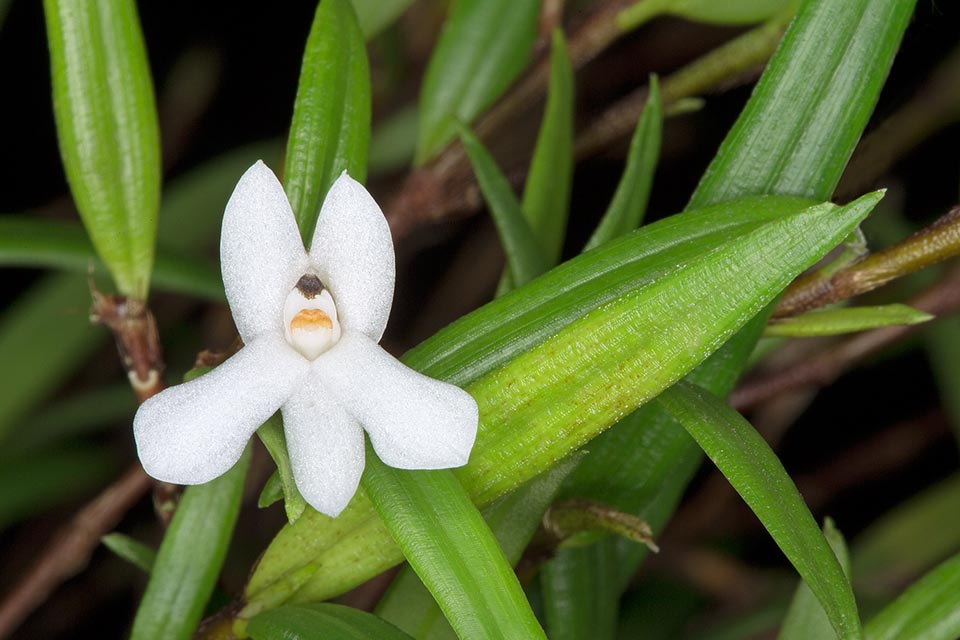Family : Orchidaceae

Text © Pietro Puccio

English translation by Mario Beltramini
The species is native to New Guinea where it grows on the trees of the mountain humid forests at medium altitudes.
The name of the genus comes from the Latin substantive “glumus, eris” = ball, with reference to the globose inflorescences of the type species; the specific name is the combination of the Latin adjective “acutus, a, um” = acute and of the substantive “flos, floris” = flower, with probable reference to the apices of the sepals.
The Glomera acutiflora (Schltr.) J.J.Sm. (1912) is an erect or sub-erect epiphytic species, about 30 cm tall, with thin ramified stems, on short rhizome, provided of leaves alternate distichous, linear-lanceolate with pointed apex, 2-4 cm long and 3-4 mm broad. Terminal solitary flowers, of about 1,5 cm of diameter, white with black spot at the apex of the labellum, cylindrical ovary 5 mm long, oblong-ovate sepals with pointed apex, 5 mm long and 2 mm broad, oblong petals with obtuse apex of the same length as the sepals and 2,5 mm broad, ovate labellum, about 3,5 mm long and 2,5 mm broad, and 2 mm long column.

Glomera acutiflora is an about thirty cm tall epiphyte of New Guinea. Rare in cultivation, has terminal solitary flowers of about 1,5 cm of diameter © Giuseppe Mazza
Miniature orchid rare in cultivation, present almost exclusively in botanical gardens and specialized collections, requires a semi-shady position, intermediate temperatures, with lowest winter values not under the 15 °C, high and constant humidity, 70-85%, and good ventilation. Frequent waterings and nebulizations from spring to autumn, slightly spaced in winter, but without ever allowing the substratum to dry up completely, utilizing rain water, demineralized or by reverse osmosis. It can be mounted on trunks, bark or rafts of cork or of roots of arborescent ferns with sphagnum at the base or cultivated in pots or baskets with compost formed by medium sliced bark fragments and sphagnum.
The species is reported in the appendix II of the CITES (species whose trade is internationally ruled).
Synonyms: Glossorhyncha acutiflora Schltr. (1912).
→ For general notions about ORCHIDACEAE please click here.
